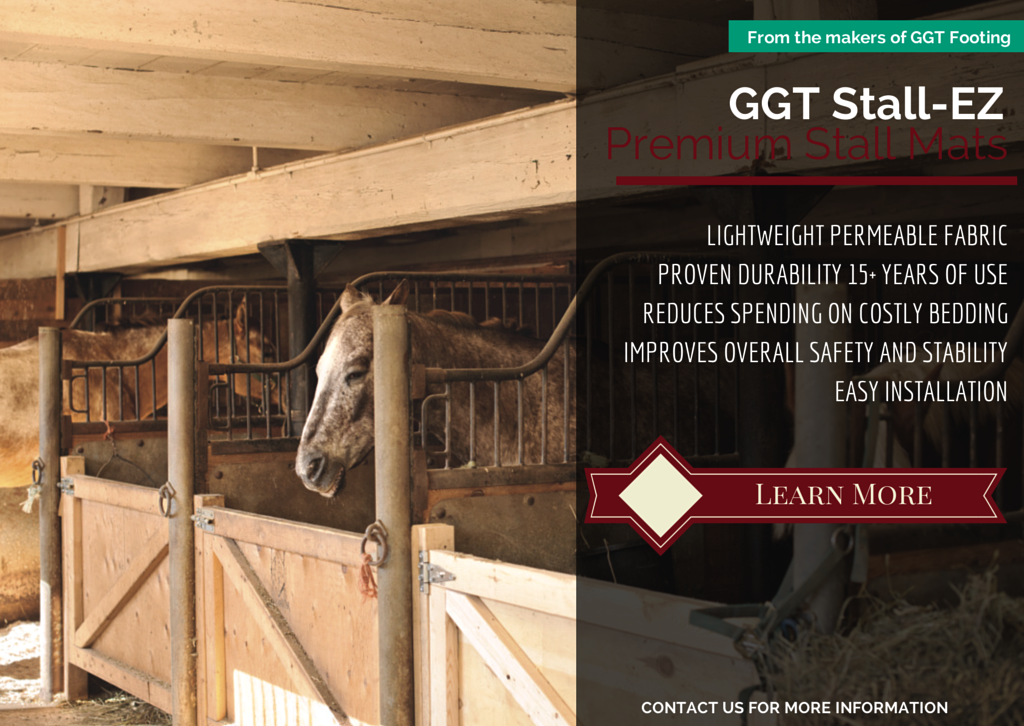Different horse sports ask horses to perform very different movements. For example, the sudden sharp movements of a cutting horse are very different from the controlled dance of a dressage horse. Not surprisingly, these different movements place different stresses on the horse's body. Arena footing that is ideal for one horse sport may not be suitable for another sport.
Multi-purpose
Most arenas that are used for multiple purposes are constructed with a sort of all-purpose type of arena footing that is ok for the majority of equestrian activities. However, if you're considering constructing a single-purpose arena that will be used almost exclusively for a particular sport, you may want to consider using a special footing instead of an all-purpose footing.

Jumping
Jumping is one of the more demanding sports that horses are asked to do. Horses clearing 5'3" jumps have been recorded achieving velocities of close to 20 miles per hour on take-off and landing. Upon landing over a large jump, the horse's feet and legs suffer a tremendous degree of impact. When taking off, a horse needs a very firm surface to allow for a good hard push up and off the ground. In addition, jumpers often need to be able to turn sharply at speed, which requires a surface with excellent traction.
An ideal surface for jumping must therefore combine the following three properties:
- Extremely shock absorbing
- High shear resistance (a firm surface) to allow for a good take-off
- High friction to prevent slipping
- Remain consistent throughout a competition to allow all of the horses a chance to compete fairly, i.e. it resists compacting
The ideal footing for a jumper is not ideal for many other horse sports. For example, in reining, a high-friction surface would be quite detrimental to sliding stops. Dressage horses have less need for friction than do jumping horses, but may have a greater need for a firm surface to support extended and collected movements.
Firm, not deep
The two primary requirements of a jumping surface, that of being simultaneously very shock absorbing and also having high shear resistance, may seem almost contradictory to individuals used to the traditional way of making a riding surface shock absorbing: by making it deep. People used to think that putting a really deep layer of sand or wood shavings down would make a nice, soft, shock-absorbing layer that would save the horse's legs and tendons. Well, yes, deep surfaces are soft, but they are have no shear resistance. The horse's hooves have nothing to push against, and the horse has to struggle against the drag of the deep surface. Try running across a deep sandy beach and compare that experience to running on a firm but cushioned artificial turf soccer field. Horses worked on deep surfaces have been shown to suffer muscle fatigue and high rates of tendon and ligament injuries.
Firm but cushioned
Deep surfaces are not good for any horse sport, and they are terrible for jumping on. A better approach is to improve the shock-absorbing abilities of a thin layer of sand by adding something to it, such as textiles. GGT's special jumper footing is a mix of sand and shredded textiles. It is very shock-absorbing, is not deep, and it also has a high shear resistance. The textiles stabilize the sand, creating a firm yet soft surface similar to that of the firm yet cushioning surface of an artificial turf playing field. The material resists compaction, is almost dust-free, and retains moisture to create a low-maintenance surface ideal for jumping.
We are licensed GGT distributors and are also experts in arena construction. If you are considering building or refurbishing an arena, don't hesitate to contact us.



